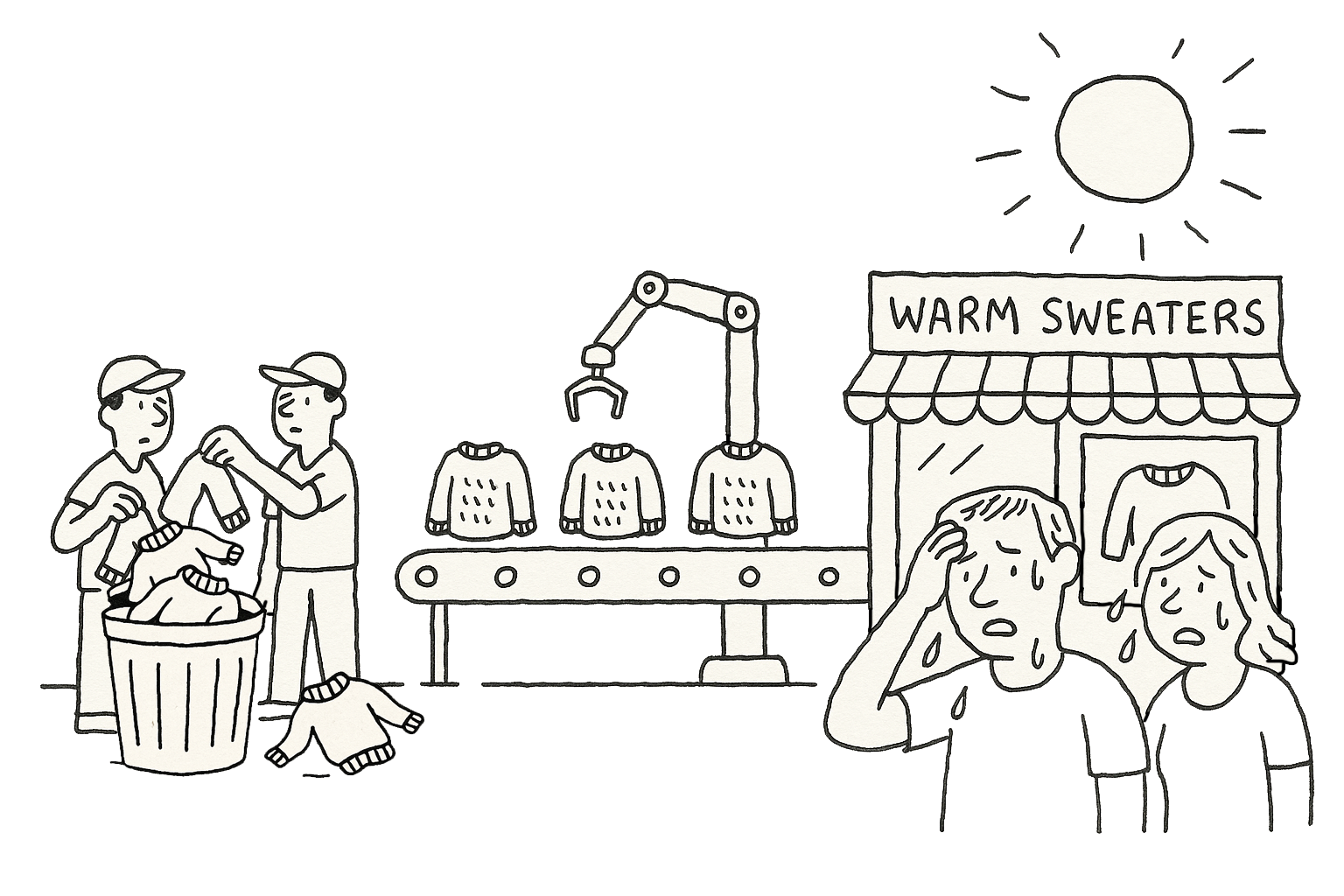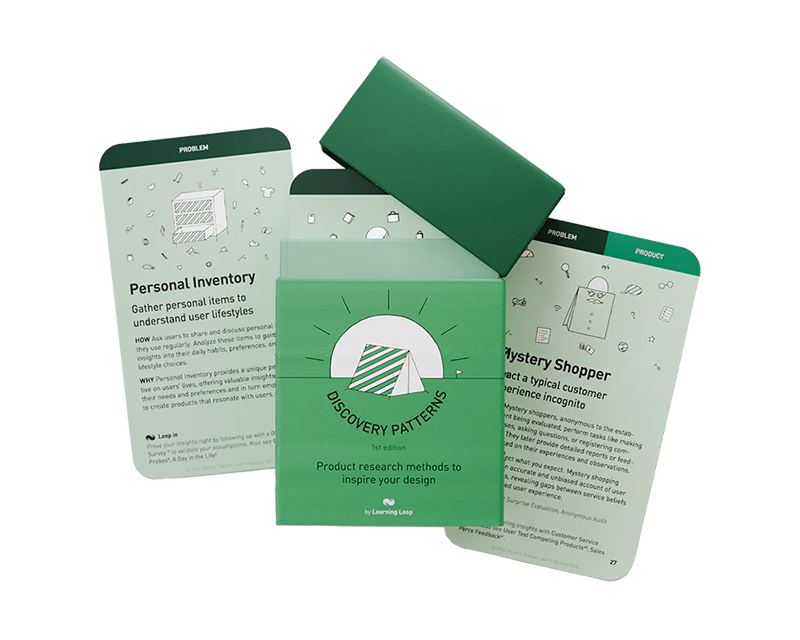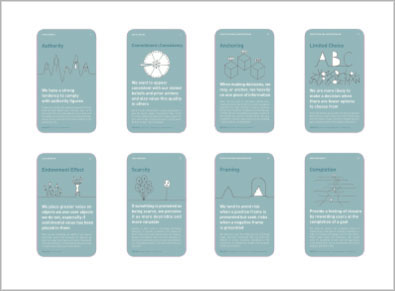Consistency is not enough
Why empathy drives product success
Discover what truly matters with the Discovery Patterns card deck
A collection of product discovery techniques to uncover insights and build products people need.
Get your deck!Consistency in product development is often treated as a golden rule. Show up every day. Ship often. Stay focused. Over time, this repeated effort is expected to lead to progress and an accumulated effect where the sum is larger than its parts. And in many domains, it’s true.
But when it comes to building products people actually want and work for the business, consistency alone isn’t enough.
You need empathy.

Why consistency is only half the picture
Consistency fuels momentum. It helps teams iterate, learn, and ship. Agile methodologies, for example, are built on the foundation of regular sprints, continuous delivery, and ongoing improvement (Beck et al., 2001). However, while regular output is necessary, it’s not sufficient.
While consistency helps you move, empathy ensures you’re moving in the right direction.
Shipping every week doesn’t matter if you’re shipping the wrong thing. Progress without direction just leads you further from where you need to be.
Activity ≠ Value.
While consistency helps you move, empathy ensures you’re moving in the right direction.
Empathy in product development is not a vague feel-good idea. It’s a method for understanding user needs, behaviors, and contexts. It means putting yourself in your users’ shoes. It is beyond just during user interviews. You have to use and internalize that knowledge. You need to make sure you’re getting the customer input you need while you’re making decisions - not after.
Empathy is linked to:
- Better problem discovery (Brown, 2009)
- Stronger customer loyalty (Goleman, 1995)
- Higher product-market fit rates (Blank & Dorf, 2012)
It’s about listening to real users, observing real behavior, and identifying real pain - even before writing a single line of code.
In fact, studies show that teams who incorporate user feedback early and often are more likely to launch successful products (Cagan & Jones, 2018).
Three places where consistency without empathy fails
1. Market Noise
If your product doesn’t solve a unique or relevant problem, no amount of consistency will matter. The digital landscape is oversaturated. Without clear differentiation, your offering gets lost.
Good marketing will just make a bad product fail faster.
“Being better is not enough. You have to be different in a way that matters to your customer.” (Ries & Trout, 2001)
2. Brand Resonance
Building a brand is not formulaic. It’s less like engineering and more like storytelling. A brand only sticks if it resonates emotionally with your audience. That resonance doesn’t come from repetition alone, but more from relevance, timing, tone, and understanding the underlying motivations of your users.
3. Marketing Without Listening
Marketing that speaks but doesn’t listen results in wasted spend and low engagement. The most effective messaging is rooted in a deep understanding of customer language, triggers, and objections. All insights that only come from listening.
What does empathy-driven consistency look like?
It looks like this:
- Running small, fast experiments to test assumptions (Ries, 2011)
- Watching how people behave with your product, not just what they say
- Asking open-ended questions and being willing to kill your darlings
- Letting customer signal guide where you invest your time
But also like this:
- Getting your product increments in the hands of your customers as soon as possible
- Avoiding the “never good enough” syndrome
- Shipping weekly, if not daily
- Shipping when you’ve got something better than what customer have now
“It’s the difference between ‘never good enough’ and ‘better than what they have now.’ We can say ‘Okay, this isn’t perfect, but it definitely works and customers will feel like this is a big improvement for them.’”- Ryan Singer, Shape up
This is the logic behind our Validation Patterns card deck - a set of practical product experiments designed to help product teams uncover signal before they commit to building. It’s structured learning, not blind iteration.
Empathy and consistency together = Learning Loops
What we need is not just effort, but learning.
As Jeff Gothelf puts it:
“We need to shift from output to outcomes. From features to feedback.” (Gothelf & Seiden, 2017)
This shift happens when teams combine consistency (regular action) with empathy (customer understanding). The result is learning loops: fast, repeatable cycles of testing, feedback, and course correction.
So - yes, consistency matters. But consistency without empathy is just motion.
To build something people want:
- Show up every day.
- But also: listen deeply.
- Validate early.
- Test assumptions.
- Use your consistency to close the gap between what you think is true and what actually is.
That’s where progress happens.
- Business Model Patterns card deck by Anders Toxboe
- Validation Patterns card deck by Anders Toxboe
- Discovery Patterns card deck by Anders Toxboe
- Ries, E. (2011). The Lean Startup: How Today's Entrepreneurs Use Continuous Innovation to Create Radically Successful Businesses. Crown Business.
- Blank, S., & Dorf, B. (2012). The Startup Owner's Manual: The Step-By-Step Guide for Building a Great Company. K&S Ranch.
- Brown, T. (2009). Change by Design: How Design Thinking Creates New Alternatives for Business and Society. Harvard Business Press.
- Cagan, M., & Jones, C. (2018). INSPIRED: How to Create Tech Products Customers Love. Wiley.
- Goleman, D. (1995). Emotional Intelligence. Bantam.
- Gothelf, J., & Seiden, J. (2017). Sense and Respond: How Successful Organizations Listen to Customers and Create New Products Continuously. Harvard Business Review Press.
- Ries, A., & Trout, J. (2001). Positioning: The Battle for Your Mind. McGraw-Hill.
- Beck, K., Beedle, M., van Bennekum, A., et al. (2001). Manifesto for Agile Software Development.

